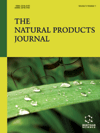
Full text loading...
We use cookies to track usage and preferences.I Understand
Many common herbal medicines, including astragalus, ginseng, and bupleurum, contain saponins, which are surface-active glycosides found in nature. Saponins have recently been proven to have potent anti-inflammatory properties and to produce immunological homeostasis in patients with a wide range of illnesses. Inflammatory bowel disease (IBD), irritable bowel syndrome (IBS), intestinal ischemia-reperfusion injury (IIRI), necrotizing enterocolitis (NEC), and radiation proctitis are all diseases of the digestive tract related to intestinal inflammation. Intestinal inflammation is another potential side effect of nonsteroidal anti-inflammatory medications. In addition to chronic diseases' emotional and physical burden on patients, they often exact a heavy financial burden on individual persons and the larger community. Because the causes of these diseases are so poorly known, there is a lack of information regarding the etiology of these conditions. On the other hand, saponins may help reduce this risk by lowering inflammation, enhancing the repair of the intestinal barrier, preserving the diversity of the intestinal flora, and maintaining the healthy and balanced state of the flora themselves. There is a correlation between inflammation of the intestines and an increased risk of colon cancer. In this article, we look at the most recent research regarding the effect that saponins have on diseases linked to inflammation of the gastrointestinal tract.

Article metrics loading...

Full text loading...
References


Data & Media loading...

